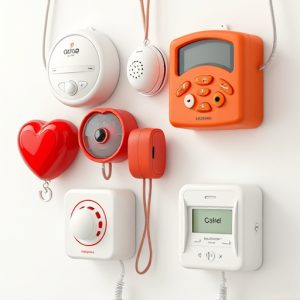Lone Worker Safety: Personal Alarms & Effective Emergency Response Training
Lone workers face unique risks like delayed response times and mental health impacts due to isolatio…….
Lone workers face unique risks like delayed response times and mental health impacts due to isolation. A crucial solution is choosing personal alarm systems with high-decibel, controllable sounds that cut through background noise. The best personal alarm sound distance should be 300-500 meters (984-1640 feet), ensuring timely alerts for indoor and outdoor workers. Effective safety alert systems require equipment, training, drills, and communication to enhance response strategies and ultimately save lives.
In today’s diverse work environment, ensuring the safety of lone workers is paramount. With an increasing number of individuals operating remotely or in isolated settings, effective safety alert systems are crucial. This article delves into the critical aspects of lone worker safety, focusing on personal alarm systems. We explore the risks of isolation, the significance of specific features like best personal alarm sound and distance, and essential protocols for responsive emergency management. By understanding these key elements, organizations can enhance the safety and well-being of their remote workforce.
- Understanding the Risks of Lone Worker Isolation
- The Role of Personal Alarm Systems in Emergency Situations
- Key Features to Consider: Best Personal Alarm Sound and Distance
- Implementing and Training for Effective Response Protocols
Understanding the Risks of Lone Worker Isolation
Lone workers, by definition, operate without immediate supervision or support from colleagues. This isolation can significantly elevate risks, as help is often minutes away in case of an emergency. Understanding and mitigating these risks is paramount for ensuring worker safety. Key hazards include delayed response times due to remoteness, lack of witness or backup, and potential mental health impacts from prolonged solitude.
Choosing the best personal alarm system becomes crucial under such circumstances. Features like high-decibel sounds capable of piercing through noise barriers and long-range transmission are essential. The ideal personal alarm should project a loud, distinct signal for rapid notification, even in challenging environments or when the worker is unable to speak. Selecting an alarm with adjustable sound levels can cater to specific needs while ensuring maximum audibility, especially in remote locations where background noise might be a factor, thus optimizing the best personal alarm sound distance.
The Role of Personal Alarm Systems in Emergency Situations
In emergency situations, lone workers equipped with personal alarm systems can significantly enhance their safety. These devices are designed to provide a quick and effective means of communication, allowing workers to signal for help promptly. The best personal alarm sound should be loud and distinct, ensuring it captures attention even in noisy environments or remote locations. This functionality is crucial when every second counts during an emergency.
Moreover, the distance at which these alarms can be heard is vital. High-quality personal alarms offer a range of up to 500 meters, enabling bystanders or emergency services to locate the worker in need quickly. The choice of alarm system should thus prioritize a powerful, long-reaching sound and reliable functionality to ensure effective response times, ultimately saving lives.
Key Features to Consider: Best Personal Alarm Sound and Distance
When choosing a personal alarm for lone workers, one of the most critical features to focus on is the sound and distance it can emit effectively. The best personal alarm sound should be loud and distinct, ensuring it can be heard above ambient noise levels in various environments. A piercing yet controllable tone has proven effective in getting attention quickly without causing hearing damage.
In terms of distance, the alarm’s effectiveness diminishes with range. However, a reliable personal alarm should offer a good range—typically between 300 to 500 meters (984 to 1640 feet)—to ensure it can alert colleagues or emergency services in time. This distance is crucial for outdoor workers and those in open spaces where sounds may not carry as well.
Implementing and Training for Effective Response Protocols
Implementing effective safety alert systems for lone workers involves careful selection of equipment, but it’s only half the equation. Training is crucial to ensure everyone involved understands response protocols. This includes familiarizing users with the best personal alarm sound and distance parameters, which can vary depending on the environment and potential risks. Role-playing scenarios during training sessions helps prepare individuals for real-world situations, fostering quick decision-making under pressure.
Regular drills and updates are essential to keep protocols sharp and relevant. As new risks emerge or existing ones evolve, so too should safety measures. Encouraging open communication among team members about their experiences further refines response strategies. Ultimately, a well-trained, proactive approach significantly enhances the effectiveness of safety alert systems for lone workers.
Lone workers face unique challenges, but with the right safety alert systems, we can ensure their well-being. By understanding the risks of isolation and leveraging personal alarm systems with powerful sounds and reliable distances, we can significantly enhance response times during emergencies. When implemented correctly, along with comprehensive training, these protocols become a vital defense mechanism in what can be a lonely and potentially dangerous profession. Equip yourself or your loved ones with the best personal alarm sound and distance, and remember that preparedness is key to preventing and managing crises effectively.


